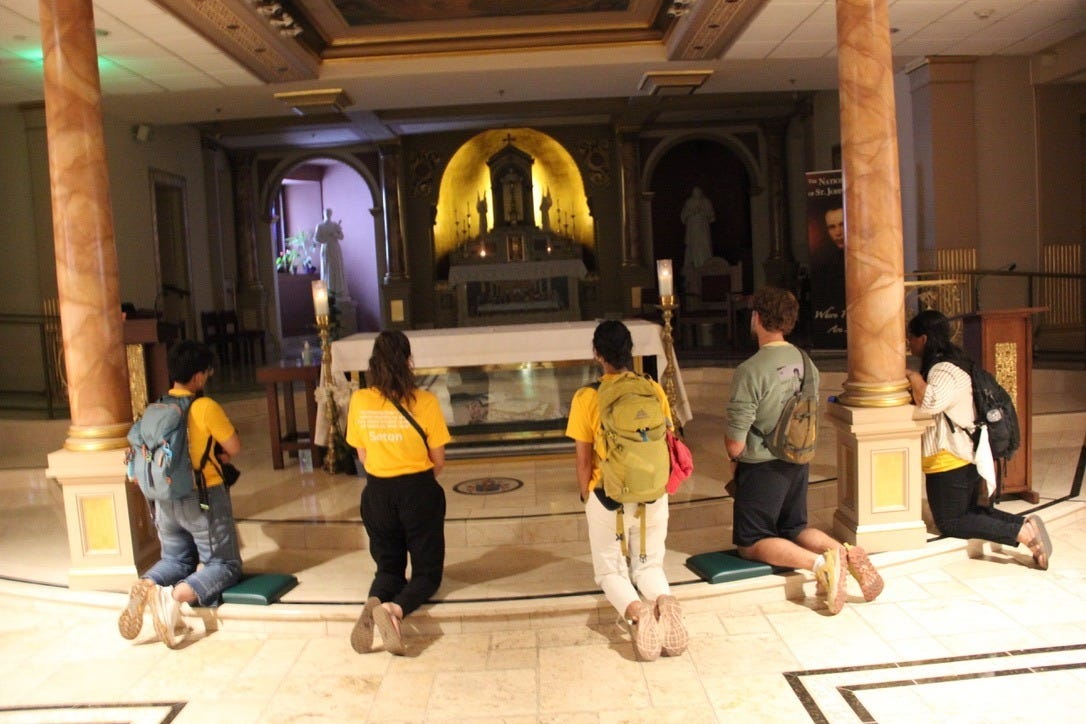‘Getting to know Jesus’: Eucharistic pilgrims share life on the road
What's daily life like on the National Eucharistic Pilgrimage?
There are only three constants on the National Eucharistic Pilgrimage: the Blessed Sacrament, the six perpetual pilgrims, and a lack of sleep.
Everything else changes, all the time.

On the Seton Route of the National Euchar…
